Automatic air vent for heating. Air vents and air valves
Starts to crash. Winter has come, the boiler is turned on, but the radiators do not heat up.
It turns out that air has accumulated in the pipes, and plugs have formed that prevent the free circulation of the coolant. The problem is solved elementarily if, when designing the circuit, air vents were provided in it, making it easy to remove gases from the pipes.
There are several reasons why air can get into the heating circuit:
- When filling pipes with water, all cavities are not completely filled.
- Particles of oxygen enter during the replenishment of the coolant during the operation of the system.
- It can be sucked in during the operation of the circuit if errors were made in its design.
- Water contains oxygen in adsorbed form. Over time, it is released, rises up and accumulates at the highest points.
A properly designed circuit ensures stable operation and tight filling during the initial filling of pressurized water.
The liquid is supplied from the bottom up until the required indicators in the system are reached. At the same time, air is gradually forced out of pipes and equipment.
In an open circuit, it is immediately released into the atmosphere, and in a closed circuit it accumulates in special sedimentation tanks. The oxygen retained in the liquid is usually released within two to three days and also rises. If no mistakes are made in the project, the gases will not linger anywhere, except for the points designated for this, at which air vents are installed.
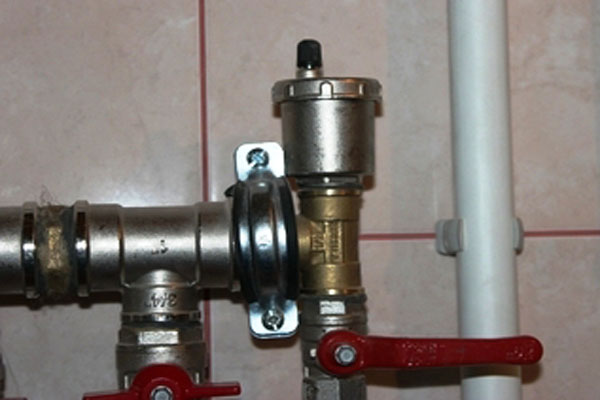
To some extent, the problem can be alleviated by preliminary deaeration of water, which will help reduce the oxygen content in it from 30 to 1 gram per 1 ton. It is impossible to determine in advance how gassed a liquid is. Therefore, in any case, even from deaerated water, it is necessary to remove gases. When a liquid is heated, the gases adsorbed in it begin to be released faster, while an increase in pressure inhibits this process.
Why remove oxygen from the water in the heating circuit?
It is already clear that the formation of traffic jams significantly reduces the operational properties of heating. But there are still a few problems that can be encountered due to the presence of gases in the pipes.
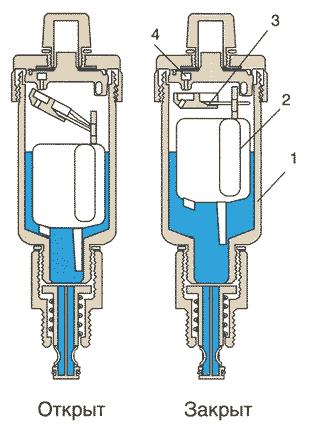
The metal in the presence of oxygen is prone to oxidation. This process is activated much more strongly if the air dissolved in water acts on the pipe walls, in which the concentration of gases is much higher.
Rust forms in steel devices, due to which the inner diameter decreases, which reduces the circulation rate of the coolant. With prolonged destructive action, corrosion can lead to a violation of the integrity and leakage of pipes.
Therefore, it is very important to monitor the formation of airborne batteries and eliminate it in a timely manner. There are practically no such problems.
Ways to deal with the airiness of the system
To remove the accumulated air in the heating pipes, special devices are used - air vents. They must be installed on each, including steel, at the outlet of heating devices or at the highest points of the circuit, where the released oxygen is concentrated.
On the market you can find various modifications of such fittings, the most common are devices made in Italy and Germany. With the same purpose, two fundamentally different types are distinguished.
Handheld Devices
Mayevsky cranes, or manual air vents, serve to discharge the air accumulated in the circuit. They have a fairly simple design and consist of a screw blocking a needle hole in a brass body.
All parts of the device fit snugly and do not let the coolant through when closed. Gases are vented through an opening located in the side of the housing. IN Lately fittings with metric threads have become more popular, which greatly simplifies their manufacture. In various designs, adjustment can be made in several ways:
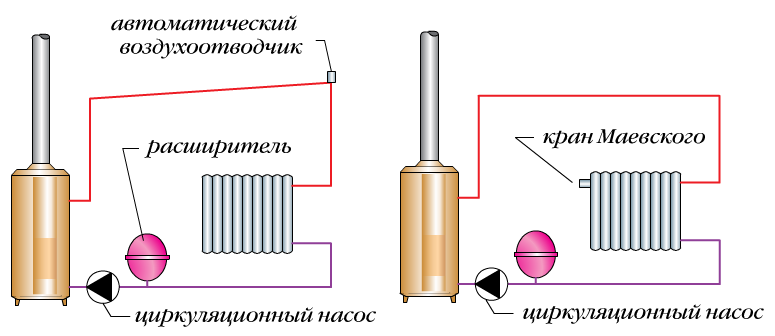
- unscrew with a screwdriver;
- open using a special ICMA square key;
- turn away with your hands.
Most often, manual taps are installed on radiators, screwing into the top hole. Such reinforcement is selected depending on the diameter.
Often these devices are placed on other devices. They are attached to heated towel rails with a tee. In two-story houses with top feed, all appliances located on the top floor must be equipped with Mayevsky cranes.
After filling the system or before the heating season, it is necessary to bleed the accumulated air. To do this, turn the manual valve counterclockwise, and oxygen exits the device.
Usually one turn is enough, but if a large amount of gases has accumulated, you can tighten the valve another half turn. You need to shut it off when water starts to come out instead of gases. In systems with forced circulation, the pump is first turned off, and after a few minutes, the accumulated gases are released. When the pump is running, it is impossible to collect all the air at the tap attachment point and the plug will not be removed.
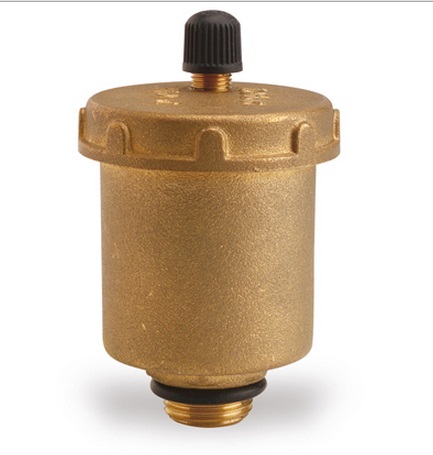
Sometimes there are manual air vents not with a needle stem, but with a metal ball blocking the oxygen vent. The design of the body may also differ, allowing the installation of the crane both straight and at an angle.
Automatic valve
The operation of automatic air vents is based on the float-valve principle. A float is installed in the brass body, connected by means of a lever to the exhaust valve. The float constantly floats in the water, while the valve is closed. If air accumulates, the float drops and opens the valve. The gas escapes to the atmosphere through a narrow opening between the float and the housing.
Then the reverse process takes place. As the air escapes, the body is filled with coolant, and the float rises, blocking the valve. If the air vent breaks down, there is no leakage of liquid due to the presence of locking caps in the design. An automatic air vent is installed in the system through a special shut-off valve that closes when the device is removed. This allows repair work to be carried out without draining water and relieving pressure.
Such devices are installed at the highest points of the system and arranged vertically. Most often they are mounted in such responsible places:
- on the heating boiler;
- at the top of the riser;
- on collectors;
- on air separators.
Wider use is hampered by the poor quality of process water. Small particles floating in the liquid clog the air vent and the equipment stops working. AFRISO fittings have undergone a fundamental change in design:
- increased hole size;
- the discharge channel is located in the middle of the float.
This design allows the air vent to work more efficiently and regardless of the quality of the coolant, besides, its maintenance and cleaning are greatly simplified.
Which air vent to install
In most cases, when designing a heating system, the owner of the house plans the autonomous operation of the equipment. In this case, it is logical to assume that automatic vent valves are preferable.
But given the problems with the quality of the coolant and the placement of equipment, it is sometimes easier and cheaper to use the manual type. Oxygen from the radiators must be bled after filling the pipes with water or topping it up. In both cases, work is carried out under the supervision of a person who will easily open the tap to make sure that there are no air locks.
Often both types of air vents are used in the same circuit at the same time. Mayevsky cranes are installed on the radiators, and where airiness may appear during operation, on the riser and - automatic valves. With the right selection of equipment, autonomous operation of heating throughout the entire heating period will be ensured.
The main problem of living in urban apartments is the heating system. Heating is a rather complicated scheme for heating various industrial buildings and residential premises, which is based on the regular maintenance of a comfortable microclimate for living.
Before the start of the heating season, utilities warn every year to bleed the air. In some cases, the cause of air is the release due to the peculiar chemical effects of hydrogen from water. But this problem can be avoided by installing air vents for heating systems. What are these devices, how do they work and why are they needed? This will be discussed further.
Why is there air in the system?
Air can get into the heating system for a variety of reasons.
The most common among them are:
- during the initial filling of the system with water;
- due to poor quality or worn sealing elements;
- due to water supply;
- corrosion inside pipes;
- violation of the installation rules when conducting and connecting the heating system, etc.
When water enters the heating system, it contains a large amount of oxygen, which expands when heated and forms air pockets. They, in turn, reduce the pressure in the system and reduce the rate of water circulation. Thus, if air vents for heating systems are not installed in your apartment, then you must manually bleed the air. If this is not done, then the room will be poorly and unevenly heated, which, in turn, will adversely affect the comfort of living.
Kinds
There are two types of air vents:
- manual;
- automatic.
Automatic air vents in the heating system are more practical and convenient to use, since they do not require any human action. However, their cost will be higher than manual counterparts. Their installation should be carried out in places where the likelihood of air pockets is the highest. Manual installation is carried out on heating radiators.
How do they work?
The principle of operation of the air vent in the heating system depends on the design features of these devices.
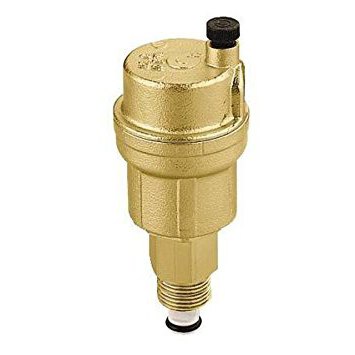 Manual air vents (as the name suggests) require human intervention, while automatic equipment can simply be installed and forgotten forever, as it will bleed on its own as the need arises.
Manual air vents (as the name suggests) require human intervention, while automatic equipment can simply be installed and forgotten forever, as it will bleed on its own as the need arises.
What problems can the airing of the heating system lead to?
Before we talk about how an air vent is installed in a heating system, let's first deal with the main problems that air can cause in heating pipes and radiators. Air obstructs the circulation of water through the system, as a result of which the heating efficiency of the room is significantly reduced. In addition, airing will cause vibrations, which over time can lead to physical damage to the heating system at the points of welding of individual elements.
The accumulation of air in the pipes will contribute to their rusting and reduce the service life. But the most terrible problem is the defrosting of the system, because of which you can be left without heat in the winter.
Design features
Manual and automatic air vents have similar design features, with a few differences.
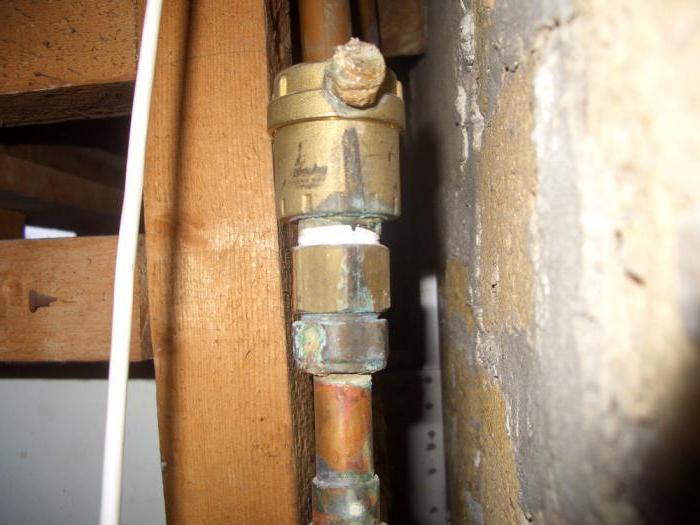 Both types of devices consist of a channel and a valve, which is responsible for removing air from the heating system. To choose which type of equipment to install in your home, you need to understand the principle of operation of a manual and automatic air vent.
Both types of devices consist of a channel and a valve, which is responsible for removing air from the heating system. To choose which type of equipment to install in your home, you need to understand the principle of operation of a manual and automatic air vent.
How does an automatic device work?
So, how does an air vent work in an automatic heating system? If there is no air in the pipes, the float is raised and the needle valve is in the closed position. When an air lock is formed, the float drops, as a result of which the rocker arm opens the valve, air is released. When all the air is completely out, the float returns to its original position, closing the valve.
The principle of operation of the manual device
Manual air vents for heating systems (the price of which is lower than for automatic ones and starts from 200 rubles) have a simpler design, but the principle of operation remains the same. When the regulator is turned, the valve opens, releasing accumulated air from the pipes. Rotation in reverse side brings the valve to the closed position.
If your apartment has an open-type heating system, then air is released from it through expansion tank. Difficulties can arise if a pump is installed in the heating system that forcibly circulates water through the pipes. In this case, it is recommended to install the device for manual or automatic air release. But where to put the air vent in the heating system?
If you bought a manual fixture, then its installation should be done directly on the radiators. At the same time, installation is recommended on all radiators, since it is in them that airing most often occurs. When using automatic devices the best place for installation is the highest point in the heating system. This is due to the fact that the resulting air will rise exactly up, where it will be removed from the system through the air vent.
Design
There are quite a few varieties of air vents, which differ from each other in their design.
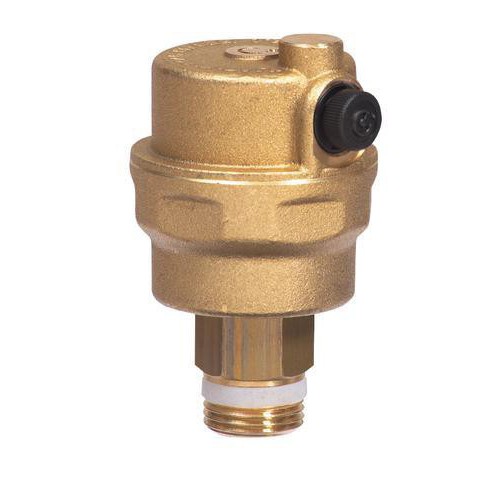 In shape, they can be straight, angular, as well as vertical or horizontal. According to the principle of operation, this equipment is divided into ball and needle.
In shape, they can be straight, angular, as well as vertical or horizontal. According to the principle of operation, this equipment is divided into ball and needle.
Some people who want to save money when heating their homes do not install air vents for heating systems, but ordinary taps. With their help, you can not only release the air accumulated in the pipes, but also drain the stagnant water. But faucets are very rare these days, since most people prefer to install air vents, which have already become an integral part of the heating system, which is not inferior in its importance to heating elements and radiators. It is the air vents that are responsible for maintaining the heating system in working order.
Installation of automatic devices
The efficiency of heating the home and the reliability of work depends on the correct installation of the taps.
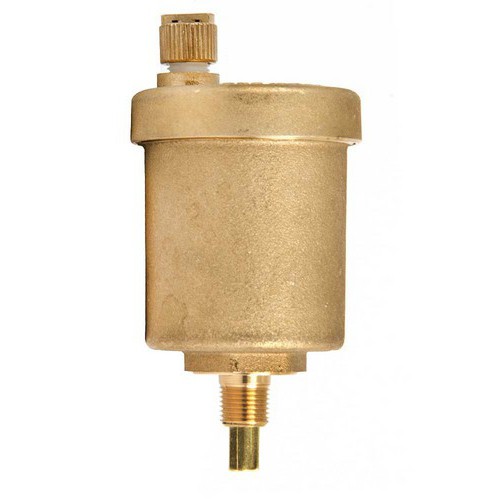 This work is not difficult, so everyone can cope with it, even if they have never done anything like this before. But here it is important to have an idea about the order of installation. So how is the installation of an automatic air vent in the heating system?
This work is not difficult, so everyone can cope with it, even if they have never done anything like this before. But here it is important to have an idea about the order of installation. So how is the installation of an automatic air vent in the heating system?
As mentioned earlier, for their installation, you should choose those places where the likelihood of air pockets is the highest. Such places include the highest points of heating equipment, collectors and heating system circuits. There is one important nuance here: air vents must be mounted strictly in a vertical position. If for some reason this is not possible, then you will have to purchase parts with a horizontal outlet.
So, we figured out how to properly install an air vent in a heating system with automatic descent. Let's now talk about how the manual tap is installed.
Installing a handheld device
For old radiators used in central heating systems, the installation of automatic air vents will not be the best solution. This statement is true for at least two reasons. Firstly, such heating systems have been in operation for many years, during which, as a rule, they have never been cleaned.
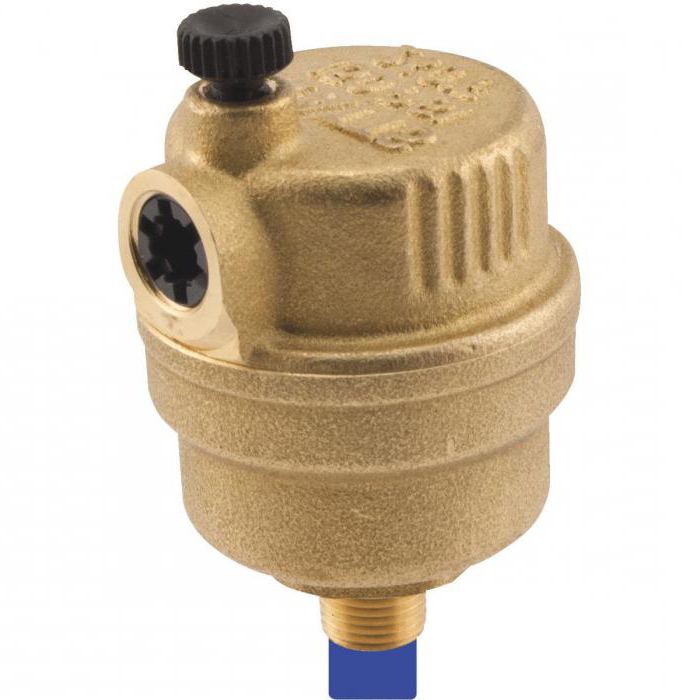 Secondly, air congestion in them is formed very often, so devices with automatic operation will wear out too quickly and fail. Thus, in apartments with old central heating, it is best to use manual devices.
Secondly, air congestion in them is formed very often, so devices with automatic operation will wear out too quickly and fail. Thus, in apartments with old central heating, it is best to use manual devices.
How to install a manual heating air vent? To do this is quite simple. First of all, a hole is drilled at the highest point of the radiator, in which a thread is then cut and a Mayevsky tap is screwed in. The whole process does not take much time and effort, so everyone can handle it. It is worth noting that an air vent should be mounted on each radiator, where air plugs are most often formed, which must be removed from the system without fail.
When choosing manual air vents, pay attention to their markings. If there are any in the heating system, then it is necessary to buy the MS-140 or OMEC models. They are able to withstand high temperatures, up to 150 degrees.
How to bleed air from the heating system?
We have already dealt with the consequences that the formation of air locks in pipes and radiators can lead to, and also talked about how air vents for heating systems are installed. Now it remains only to figure out how the air is released with the help of vents.
The first step is to inspect the heating system for leaks. If any are found, then they need to be eliminated. If forced circulation is used in the system, it is necessary to check the serviceability of the water pump and take preventive measures. If everything is in order, then you can proceed to the descent of air.
This procedure is performed in the following sequence:
- Electricity is being cut off.
- The heater switches off and the water supply to the heating system is cut off.
- The air vent opens to the maximum, after which you will hear a characteristic hiss that accompanies the release of air from the system.
- The stagnant water is drained until it runs clean and without air bubbles.
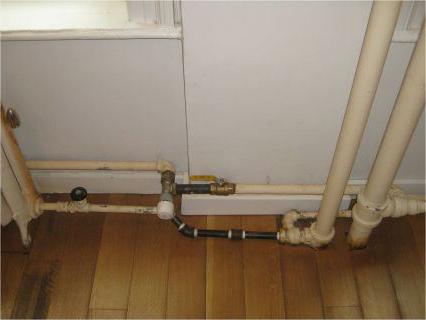 After all the air is released from the system, it is necessary to fill it with water. First of all, the water heater is filled, and only then the radiators and pipes. It will not be superfluous to add a special substance with anti-corrosion properties to the water. This will significantly increase the life of the heating system and save on its partial or complete replacement.
After all the air is released from the system, it is necessary to fill it with water. First of all, the water heater is filled, and only then the radiators and pipes. It will not be superfluous to add a special substance with anti-corrosion properties to the water. This will significantly increase the life of the heating system and save on its partial or complete replacement.
If during the course of work you find that the heating system is clogged, then it is necessary to clean it. To do this, it is better to use special chemicals that effectively cope with any blockages. You can buy them at any store specializing in the sale of heating equipment and related products.
An air valve in a heating system is a device that allows air accumulations to be removed from the heating system. An automatic or mechanical valve is a mandatory component of the pipeline system (Fig. 1).
Rice. 1Every closed cycle heating appliance emits gases. Air, oxygen, hydrogen make up these air emissions in the heating system. Periodically, they must leave the system for normal operation in the future. If you do not periodically release gases from the heating, air accumulations will unpleasantly manifest themselves as noise, poor circulation of the coolant. And as a result, poor space heating, corrosive destruction of pipes and other metal elements.
Air valve options
The air valve for heating is in contact with water, so its material must be resistant to destruction and corrosion. This element is cast iron or plastic with a long service life of about ten years at least.
Only two valves can get rid of air by 100%:
- auto;
- mechanical (manual) - Mayevsky's crane (Fig. 2).
The old old-fashioned method of bleeding air from the radiator is as follows: a valve on the battery was unscrewed with a special key, rusty water came out with air, and then the valve was twisted. After the tightness was restored, the heating devices restored their functions. Valves remove air, removing it through special openings. These holes open when there is air and close when it is released.
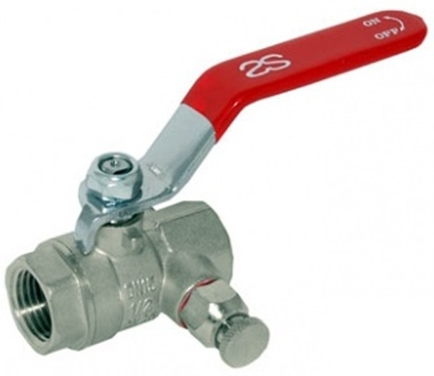 Rice. 2
Rice. 2Where does air come from
Air masses enter the heating system different ways:
- when water fills the heating equipment;
- during not quite correct installation;
- water already with air enters the pipes.
Hydrogen, an admixture of other gases can also be found in water, with the composition of carbon and gases as reduced as possible.
Automatic valve
The automatic valve (Figure 2) is a kind of floating float. This element is able to protect the system from unwanted gases in automatic mode, there is no need for human intervention. Its operation allows you to restore the pipeline system, after an accident, due to water hammer.
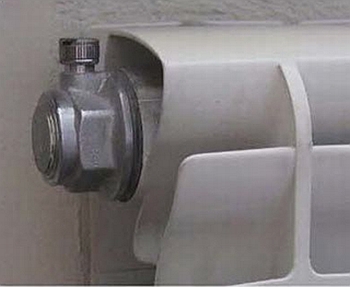 Rice. 3
Rice. 3The automatic air valve for heating works quite simply, based on the laws of physics. The float (automatic valve) is located in the heating system, and plays a role in maintaining the hairpin shutter. If air accumulates, the automatic valve opens the shutter, releases air and returns to its original position.
When the heating system is filled with coolant, when there is no water in the valve itself, this float is at the lowest point, allowing air to quickly escape. If there is no need to bleed air, this can be prevented: tighten the top plug. During the use of the system, this plug must not be put on, it must be removed.
Automatic reverse action elements are installed at particularly unsafe points in relation to air accumulation (manually uncontrolled points). Automation is needed in the following places:
- in boilers;
- in collectors;
- in risers;
- in the comb, separator.
Manual valve
In the design of such an element there is a needle that opens and closes the air outlet. Unlike an automatic element, a mechanical valve requires human intervention. Manually opens and closes the regulator.
A sign that the air has completely escaped from the system is the dripping of hot water. The appearance of a coolant means the need to return the regulator to its normal position. This method of air extraction is very effective, but requires the intervention of people.
Since air is much lighter than water, it can appear at any point in the heating circuit. There are closed and open systems. In the second option, the air problem is solved by installing an expansion tank.
An automatic or manual air vent of horizontal, vertical, angle, straight, etc. type helps to control the system, preventing its wear and tear, as well as breakage.
The air in the heating system is not even bad, it is critical and negatively affects the efficiency of home heating. And the most unpleasant thing about it is that it is constantly formed in the pipes. Therefore, its removal is a never-ending process. That is, a person has to either constantly bleed it manually by means of a Mayevsky crane, or automatically, which is much more attractive. It was for this that such a device as an automatic air vent was created, which is the topic of this article - together with the stroisovety.org website, we will deal with its design, get acquainted with the varieties and principle of operation, and also talk about how and where it is installed .
Automatic air vents in the heating system photo
Automatic air vent: principle of operation
You will probably be very surprised if I say that Mayevsky's automatic faucet works on almost the same principle as the toilet bowl - in both devices, the float does the main work. In the case of a toilet, the movement of the float closes and opens the needle valve through which the liquid passes, and in the case of automatic venting through the needle valve, gas is removed from the heating system. In fact, in such a system there are only two working positions of the valve - a float at the top and a float at the bottom.
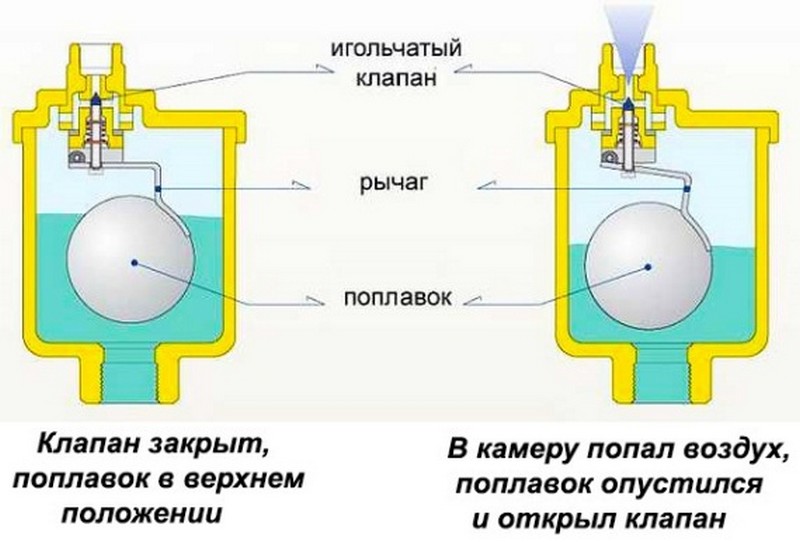
Everything is fine, everything works, and the air is removed automatically - now you do not need to control this process manually. There is really one “but” - this whole system works only with the vertical position of the float, that is, the automatic air valve itself, which is not always possible to achieve in the heating system. In principle, and this is not a problem, because, having comprehended this situation, the manufacturers of such devices quickly found a way out, and as a result of these searches, alternative designs appeared - varieties, so to speak.
Types of automatic air vents
In total, there are three varieties of these devices - despite this, the operation of an automatic air vent, or rather its principle, remains unchanged. In all cases, the same needle valve is used and the same float opens and closes it - the difference is only in the position of the body relative to the connecting pipe, i.e. threaded connection.
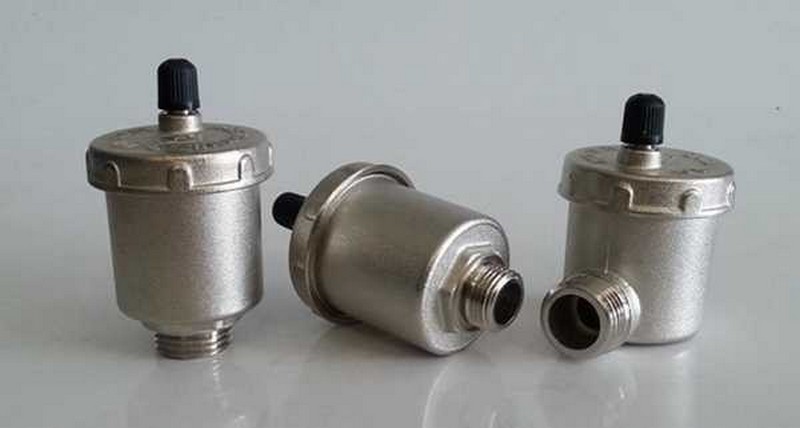
This and all the varieties that an automatic air valve for heating systems can boast of. In principle, more is not needed, since despite the various conditions installation, one of them will still work.
Which is better: automatic or manual Mayevsky crane
No matter how attractive the operation of an automatic air relief valve may look, no matter what advantages it promises, there are still some circumstances that speak not in its favor. Or at least talking about the economic inexpediency of installing the machine. There are few such circumstances, but nevertheless they occur.
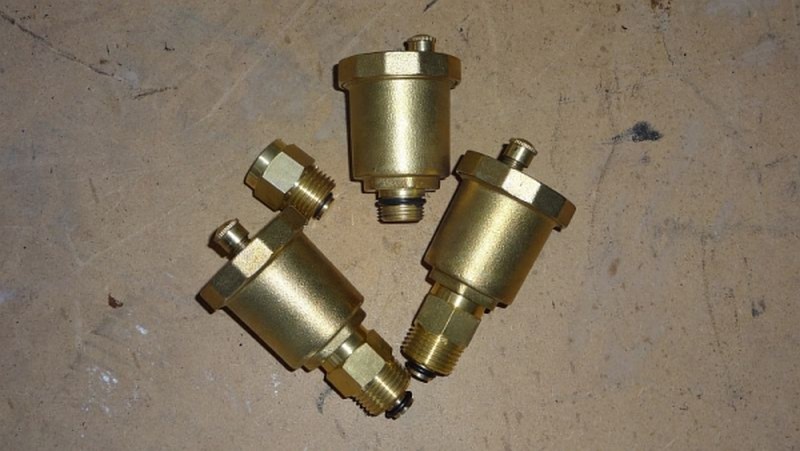
Why such distinctions, you ask? Everything is quite simple - an automatic air vent costs at least 10 times more than a Mayevsky faucet. So if there is no special need for it, you can refrain from unnecessary expenses. By the way, I completely forgot to say that any automatic air vent can be used in manual mode. To do this, it is additionally equipped with a spool - you just need to press a match or something else thin on its inner pin, and the air will come down. Alternatively, if it is not there, water will go.
Air vent - a device for bleeding air from a pipeline system. It is based on the principle of the float. The float floats, presses the needle or plug against the outlet. The air from the heating or water supply system rises, the float falls, opening the outlet. As soon as the air was released, the float resurfaced and blocked the outlet. From this, these products are called automatic air vents or air valves. True, there are also air valves in the sewer system, but they perform a different function there.
Why do you need an air vent? The fact is that air is often an insurmountable obstacle to the passage of water in water supply, and even more so in heating. Air can cause defrosting of radiators or entire radiator heating circuits. Water does not go where there is an air lock, it goes along the path of least resistance, that is, through other radiators, other circuits, leaving air-filled heaters to freeze. Even if half of the radiator is filled with air, then only that part of it through which the coolant passes will heat. If there is air in the boiler, the uncooled part of the boiler heat exchanger will overheat, which can damage it. Air in the heating system is a destructive thing. It expands much faster and more water, creating a sharp increase in pressure. He creates a lot of trouble. The most dangerous areas of air accumulation are the upper parts of radiators, other heating devices, the upper sections of pipelines that form loops. It is in these areas that air vents should be installed. Each radiator, collector, boiler, hydraulic arrow must have its own air vent at their highest point. A manual or automatic air valve is another matter, the most important thing is its presence and regular maintenance.
Many people want to buy a high-quality air vent so that it lasts for a long time. Yes, quality plays a big role, but not the main one. The fact is that no matter what the quality air vent, it remains a consumable. For their quick replacement, there are even special mounting valves for air vents, so that you can easily unscrew one and wrap another in its place. The main thing is regular monitoring of performance. The cork can stick, boil, get stuck in the bleed hole and not release air in time. And if you overlook this moment, you can be left without heat in the house.
For heating radiators, manual air vents or Mayevsky taps are usually used. In rare cases, automatic products for radiators are used, but this is extremely rare. Usually, before the start of the heating season, they bled air from all radiators and forgot about them until spring. Another thing is automatic air vents. They are usually placed where there is a lot of air, where it constantly accumulates and it is rather difficult to manually bleed the air every day. And this is at the boilers, on the collectors and at the highest points of the heating circuits.
An automatic air vent is always included in the boiler safety group along with a pressure gauge and a safety valve. It should always be only in a vertical position, the outlet should not be obstructed by anything. If the hole for it is in a horizontal position, then there are products with a horizontal connection.
The most popular air vents are Itap, Emmeti, Far, Oventrop in ascending order of their price and at the same time of decreasing popularity. Oventrop and Far - have excellent quality, but their price is several times higher than cheap counterparts. They last several times longer. Here, how lucky. But several pieces of cheap analogues can last longer than one expensive one.




